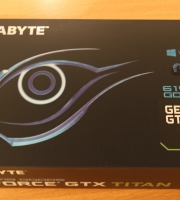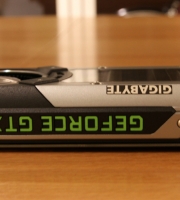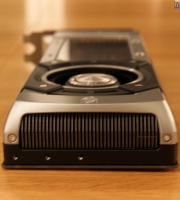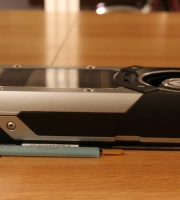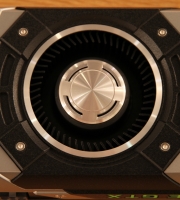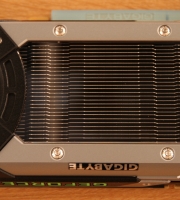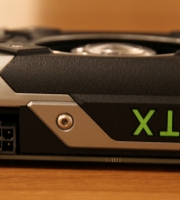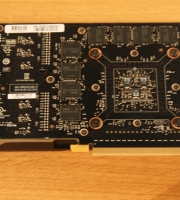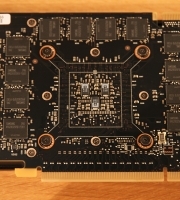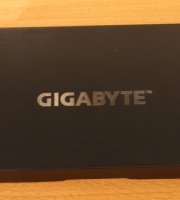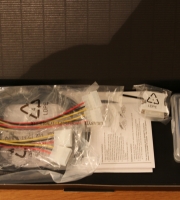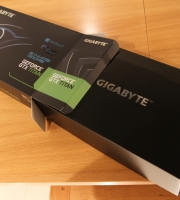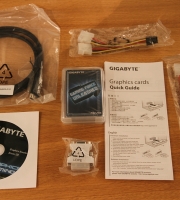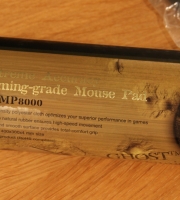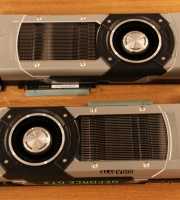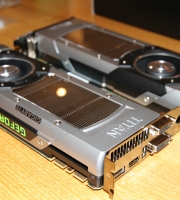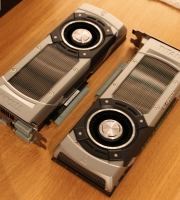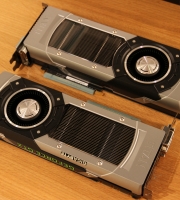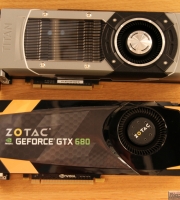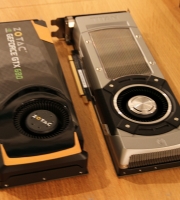Gigabyte Geforce GTX Titan
Gigabyte’s take on Nvidia’s super-expensive “Titan”. At its heart beats the 7.1 billion transistor GK110, the pinnacle of Nvidia’s “Kepler” GPU family which the company first featured on two of its professional cards in 2012, the Tesla K20 and K20X. The chip contains 5 GPCs (graphics processing clusters) which each cluster accommodating 3 SMXs (Streaming multiprocessors) making a total of 15, though to improve yield rates only 14 of these are active. Inside each SMX is 16 texture units, 192 CUDA Cores (also known as shader processors) and an additional 64 “double precision” Cuda Cores. Multiplying each figure by 14 (the number of active SMXs) gives us grand totals of 2688 cores, 896 DP cores and 224 texture units. For further details of the GPU’s specification, feel free to cast your eyes over this article!
The Gigabyte card pictured below was available at the time of the Titan’s official launch in February 2013 and in common with all rival vendors, is based firmly on Nvidia’s reference design.
The style and placement of the card’s fan and heatsink has barely altered since the original GTX 8800 was released more than seven years earlier, though the quality and effectiveness of the components has been greatly improved, even when compared to GTX 680. The typical “squrrel cage” fan appears far more robust, the heatsink heavier and the cowling shroud which surrounds both is constructed mainly from aluminium, making the card aesthetically similar to the GTX 690.
Gigabyte’s bundle would perhaps have been considered generous were it not for the price of the card. Nevertheless, a fancy mouse mat, a set of playing cards, two power adapters and a display port cable do afford the buyer something practical and suggest a sense of fun.





